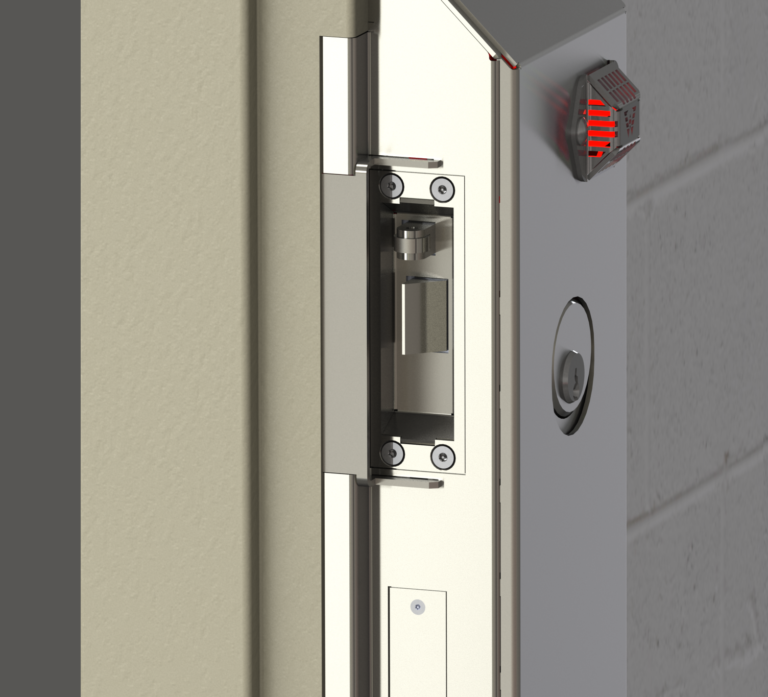Q&A – Correctional Checkup
Anno
Medical care in the correctional setting has been a hot-button issue in the United States for several years with high-profile deficiencies in various jurisdictions gaining national and local media coverage.

In an effort to avoid the problems that often give a black eye to the correctional industry, the National Commission on Correctional Health Care aims to improve the quality of health care at correctional facilities while creating a set of widely recognized standards.
Administration and management, chronic disease, mental health issues and juvenile health care are among the many topics that will be discussed at the organization’s annual conference in October. Co-founder B. Jaye Anno, Ph.D., CCHP-A, will address the conference this year. She recently spoke with Correctional News during a phone interview.
CN: You’ve been involved with medical care in corrections since the 1970s. How is it different now?
BA: It’s exceedingly different. When I first started working in this area, most jails had no delivery system in place. Health care at that time was just considered to be a privilege, not a right. Inmates had to be able to convince a correctional officer that they needed treatment and if they liked you and wanted to take you, they would. But, they would take you to the local emergency room because they didn’t have on-site care.
In prisons, they were a little better off. They usually had some “health professionals” but they tended to be ex-medical corps. Men who were not licensed health professionals, who were assisted by inmate nurses, who weren’t really nurses. There were very few physicians that were involved and a number of those that were involved were people that had institutional licenses. They could only practice in an institution.
What we have 30 years later is a very different scenario, where certainly in all prisons and most jails they have an on-site clinic. They all provide ambulatory care on-site and the health professionals that work there are certified and registered the same as they would be if they worked in the community. We have made tremendous differences in terms of being able to provide an adequate delivery system.
CN: A major part of the system now is privatization of health care. Has that helped medical coverage at facilities?
BA: Privatization has been a help to correctional administrators in the high cost of providing care, and it increases every year. In government-run programs there are often cost overruns because the budget has already been approved. Because the jails and prisons don’t have any control over who comes into the facilities and how healthy they are, there are often cost overruns, and at the end of the year they have to go back to get a supplemental increase.
The primary advantage privatization provides for the correctional administrator is they have a fixed budget. They agree to provide services for X number of inmates for X number of dollars. Those costs stay the same unless the number of inmates increases dramatically.
CN: Are there disadvantages?
BA: I think that there can be disadvantages. It’s not specific to any company because I have reviewed a number of jails and prisons where the health care is privatized and sometimes I find that they do a very good job; sometimes I find that they don’t do a very good job. It’s more a matter of who are the principals that they have there.
I think that one of the things that the private companies can improve on is they don’t tend to use experienced administrators. They tend to take an registered nurse that is a good RN and put them in a position of administration. Those individuals have never studied administration: They don’t really know the skills or a lot about budgets and personnel. I think they tend to be somewhat weak in terms in administration of health services.
CN: What would you recommend to a client: privatized health care or in-house care?
BA: It would all depend on the circumstances. I have recommended privatized health care in a number of places. For example, Wyoming was having difficulty several years ago hiring RNs. One of the advantages that a national company has is they usually have access to more personnel. The Wyoming facilities are located in small communities, they couldn’t hire RNs and they were sort of at the mercy of the local hospital. The hospital wouldn’t negotiate agreements with them and in that particular instance I thought it would be to the advantage of the Wyoming Department of Corrections to contract out their health services. They needed access to additional personnel and to be able to negotiate better rates with hospitals to do in-patient admissions.
There have been other systems that I have reviewed where I think it is to their advantage to continue with a government-run program. It all depends on the circumstances at a particular facility or system that you are looking at.
CN: What are your thoughts on the ongoing health care crisis at California’s prisons?
BA: California is pretty unique these days. Most systems already had their statewide class-action suits. You don’t really see the type of class-action suit that you have in California anymore. California has had its fair share of suits, but they have not been system-wide.
I think because California has had a number of problems for a number of years, this should be helpful in getting a unified delivery system in place that is the same at all of their facilities.
It causes a lot of difficulty when inmates get transferred a lot if they thought they had a right to something in one facility and they go to a new facility and practices are different there. You get a lot of inmate complaints and lawsuits. I’m a great believer in having a set of policies and procedures where the only differences would be related to size, gender or admissions.
CN: What are some other basics steps that can be taken to prevent problems with correctional health care?
BA: You want to have uniform policies and procedures and ensure that health professionals that work in corrections are licensed, certified and registered the same as if they were in the community. You want to make sure that you don’t have inmates involved in any way in the health care system because that leads to a lot of abuse and power over one inmate from another.
Make sure that a quality improvement plan is in place and there are cost containment practices. There are tons of things that can be done for cost containment.
CN: The failure of correctional health care systems is a major issue in several U.S. regions. Is there a common thread in medical systems that are failing?
BA: Most facilities that I go to have an adequate delivery system, but they fall down because of individuals that are not doing their job. We hardly ever — except in California — see statewide class action suits, but we continue to see a number of individual civil rights suits claiming that people didn’t do what they were supposed to do.
CN: Are there any emerging trends in correctional health care that you are seeing?
BA: I wouldn’t say that they’re new, but I think there is an increased interest in cost containment because I think that is something that everyone is concerned about. Also, I think there is an increasing emphasis on quality improvement. Most of the problems today could be addressed if you had an effective quality improvement program in place.
In correctional health care, we tend to be behind the free community in terms of the sophistication of our quality improvement process. What I see too often when I go out to prisons and jails is they have a quality improvement plan in place, but it is not an effective one because somebody is telling them to focus on the wrong aspect of health care. Oftentimes the programs that are in place tend to focus on paper processing as opposed to problem solving.
CN: We’re hearing more and more about post-release treatment. Are you seeing an increase in those types of programs?
BA: We are seeing more programs like that and I’m a strong advocate of appropriate release planning. We’ve seen some places that have a very active program. For instance, the Hampden County Jail (in Massachusetts) has a very unique process. It views correctional health care, basically, as public health care, which it is. In that particular jail, they have physicians from the community who provide service in the jail and the continuity of care once the inmate is released.
If you want an inmate to stay on meds the best way to do that is to not only discharge them with a limited supply of medication until they can get in, but also set up an appointment for them or at least get them a referral, so they can get the treatment that they need.
CN: Should that viewpoint be the role of correctional facilities — the idea of correctional facilities providing public health care?
BA: I think it is the role of correctional health care. It is essentially public health. We are dealing with the same population — individuals who are poor who haven’t had good access on the outside, or if they have had access, their access has been through public clinics.
We’re dealing with the same population. I’ve always considered it to be wasteful for correctional facilities to have to rescreen and retest individuals when they have had these same tests within the past year in the community. Because we don’t have access to records and the kind of linkage with public agencies that we should, we end up spending an awful lot of money when people come into our facilities during initial screenings and assessments.
CN: It seems that not everyone in the corrections industry is going to agree with that outlook.
BA: I think you are right. I think that one of the things that many administrators would say is, “Why should I have this obligation? The cost of their care is under my budget while they’re still in my facility, but once they are released into the community I shouldn’t have to pay for it.” Essentially, all I think we are asking the correctional administration to pay for is a limited supply of medication until they can get hooked up in the community.
I think it all depends on how you view a correctional facility. I view it as a part of the community and the bigger world. We say taxpayers should have an interest in ensuring that these people continue to get treated because if they don’t get their meds or if they get off their meds, it’s going to cost more to treat them. I view corrections as just one stop in the chain.






